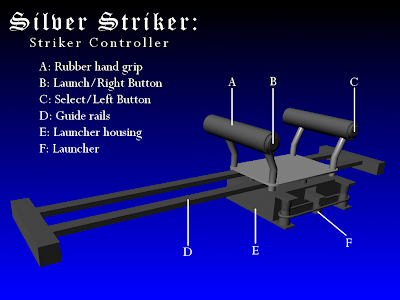Rollmites is a 3d action puzzle game that plays like a cross between mini-golf and pinball. To play the game you start by powering up its rocket booster, aiming, and launching it into the air, it then curls into a ball and moves like a pinball. You must try to destroy all the enemies on the playfield, which stand in different places kind of like the different holes on a golf course. When you destroy an enemy you gain its power. Each enemy represents a type of movement. When you gain a power, you can only use it for a set amount of time before you return to your ball form. Each power is a different form that moves in a unique way: Jumping into the air, rolling like a wheel, bouncing like a top and drilling into the ground, gliding like a paper airplane, and flying like a jet. Powers can be used one after the other to advance the rollmite around the field. For example you might activate jump and launch upward, then active glide and glide downward towards an enemy, then smash through that enemy, gaining wheel power and using it to spin up a hill towards another enemy, and so on.
 |
| Jump man |
 |
| Flying man |
 |
| Roller man |
The game is turn based, when the rollmite stops moving the turn is over, you do not have direct control over the rollmite and must aim it carefully and use the powerups you gain at the right time and in the right order to get a high score. It is a fairly unconventional game and really needs to be seen to be understood:
At the end of each turn you lose 1 'battery points'. If you drain your batteries completely you die and must restart the stage. Every time you destroy an enemy you gain 0.5 battery points. Thus it gets harder to survive as you run out of enemies to destroy.
Once you have destroyed all the enemies and are down to 1 remaining, the remaining enemy turns into a portal that when entered, transports the player to the next stage, or a bonus stage depending on the score.
The bonus stage is an endlessly long, randomly generated, pachinko machine board that you fall through until you fall into one of the exit portals on the sides of the board. As you fall you can press a button to pulse a force field around you that can push you off of the surrounding surfaces and project yourself in different direction. The goal of the bonus stage is to collect bubbles that float up from the bottom of the screen as you fall. bubbles contain powerups which can be used in the next stage.
Rollmites was a very ambitious project for me and eventually fell by the wayside as I began working full time. It is playable currently but still needs a ton of work.



















